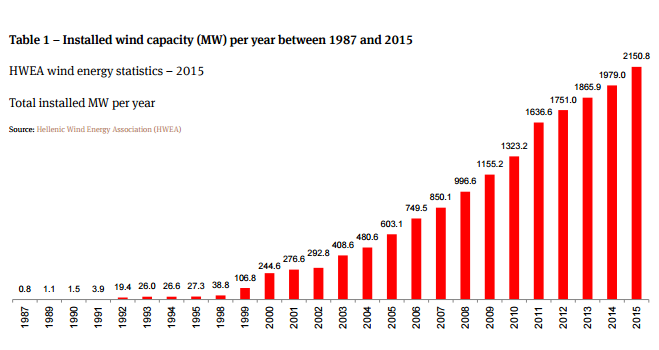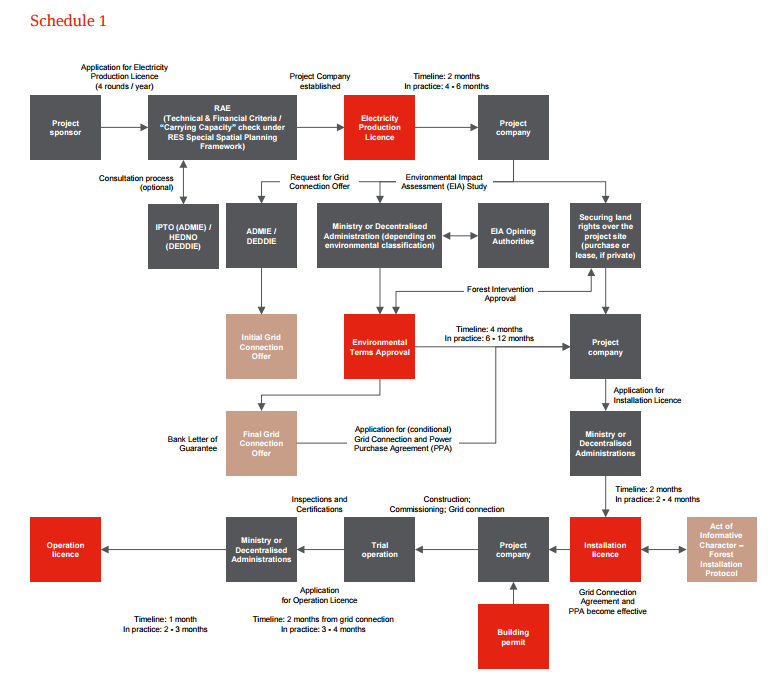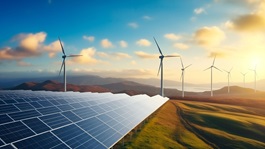Grid capacity and interconnections are critical
The vast majority of existing wind parks in Greece with an installed capacity in excess of 10MW are located in south mainland Greece, south Evia, Peloponnesus and Thrace. Despite their wind potential, the rest of mainland Greece, as well as the Aegean Islands and Crete, are yet to be exploited. This is due to limited grid capacity and the lack of adequate interconnection with mainland Greece where most electricity demand is located. Wind power projects in mainland Greece often depend on grid reinforcements and extensions at the cost and initiative of the interested project sponsors. However, unlocking the great wind potential of the Greek islands depends on some critical interconnections, some of which are expected in the short to medium term, with the exception of Crete which is a long term infrastructure project.
South Evia island upcoming opportunities
The recent completion of a new 150kV submarine interconnection between south Evia island and Attica region will enable the development of 380MW of new wind power capacity in south Evia and the nearby Cycladic Islands of Andros and Tinos. The development has an estimated investment value of €700 million which will be sponsored by some of the prominent market players.
However, the project sponsors face an imminent additional cost allocation of €150,000 per MW of licensed capacity to pay for the interconnection. This additional cost, combined with limited funding currently available for many project sponsors, will most likely lead to acquisition opportunities for a number of wind power projects at an advanced stage licensing wise. These projects may prove attractive, being located in a very windy area which, together with central Greece, is one of the most promising Wind Priority Area(s) for development of 3,240MW mandated under the 2008 Special Spatial Planning Framework for Renewables. Moreover, the scheduled upgrade of existing grid infrastructure in the area to 400kV will enable the development of additional 450MW– 550MW of wind power capacity in south Evia in the future.
Imminent interconnection of Cycladic Islands
The ongoing interconnection of some major Cycladic Islands with Cape Lavrio in Attica region, which is scheduled to be completed by the end of 2016, will enable the development of another 200MW–250MW of new wind power capacity in another very windy area of Greece with offshore wind features that are practically untapped to date. However, local communities that are heavily involved in the tourism industry are not particularly keen to accommodate wind parks on their islands despite the environmentally friendly profile that wind parks can provide to those communities as a competitive advantage over other neighbouring tourist destinations.
Increasing interconnection prospects for Crete
ADMIE, the system operator, has included the interconnection of Crete with mainland Greece in Attica and/or Peloponnesus in its ten-year system development programme for 2014–2023. Three optional scenarios are examined in order for such an ambitious project to materialise by 2020. 800MW of new wind power capacity could be installed in Crete in the base case scenario of an interconnection with Peloponnesus (expanding to 1,200MW and reaching 1,600MW in the more ambitious scenarios of a direct interconnection with Attica).
In this context there are major players who are developing large clusters of wind power projects in Crete, including an innovative hybrid project comprising water pumping/ storage (100MW) and wind power of 90MW installed wind capacity and 75MW guaranteed output capacity. This project is expected to enjoy special feed-in tariffs available to hybrid renewable energy projects under the applicable legislation.
However, the estimated €850 million to €1 billion budget required for such an interconnection project makes it quite challenging under the current economic conditions. Alternative means of funding are proposed by stakeholders such as project bonds and public-private partnerships. This would enable the implementation of this ambitious interconnection project that is required, not only for renewables and wind power exploitation on the island, but also for grid stability purposes and to minimise black-outs risk in a popular tourist destination like Crete.
An end to grid constraints in Peloponnesus and Thrace
Since 2012, Peloponnesus, a Wind Priority Area for 875MW (in its South-East tip only) under the 2008 Special Spatial Planning Framework for Renewables, has officially been declared as a grid congested area with a maximum of future wind capacity estimated at 1,100MW out of 1,900MW in total for renewables. Following completion of the ongoing upgrade of Peloponnesus’ grid infrastructure to 400kV, it is expected that up to 2,200MW of wind power capacity could be safely installed in Peloponnesus, including 475MW of existing operational wind parks. Subject to any spatial planning and environmental limitations, 1,700MW of new wind capacity could be installed in the area in the medium term.
Thrace, also a Wind Priority Area for 960MW under the 2008 Special Spatial Planning Framework for Renewables, is yet to be declared as a grid congested area. However, in practice, the delayed completion of certain grid upgrade and expansion works in the area means that new wind power capacity cannot currently be developed. Upon completion of these works an additional 700MW–900MW of new wind power capacity could be added to the existing 245MW of operating wind parks in Thrace.




